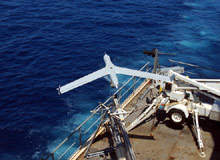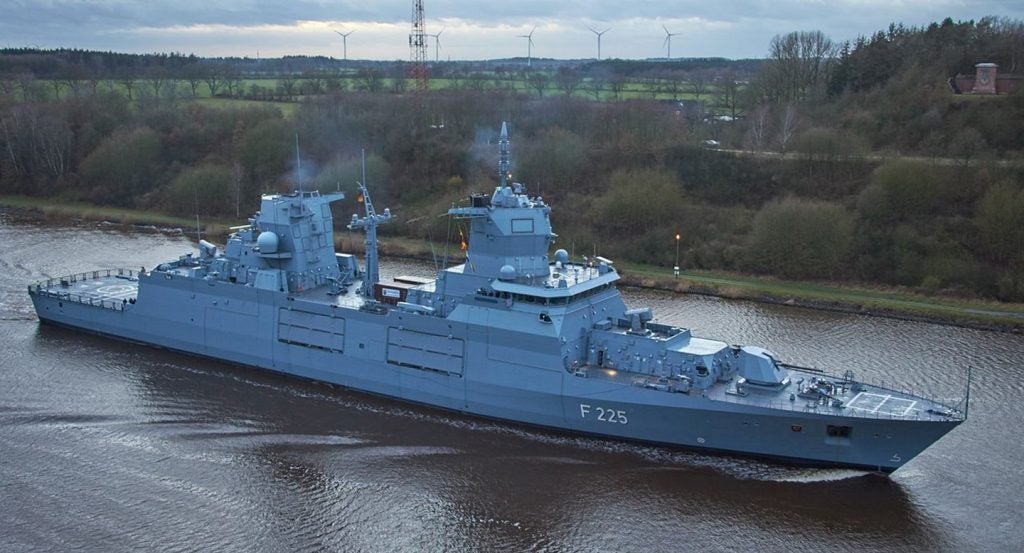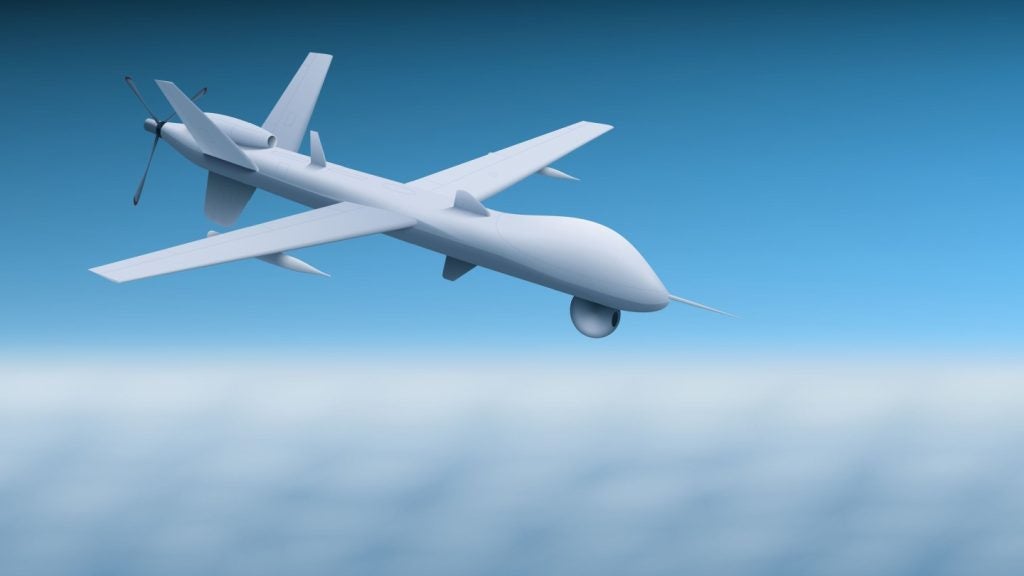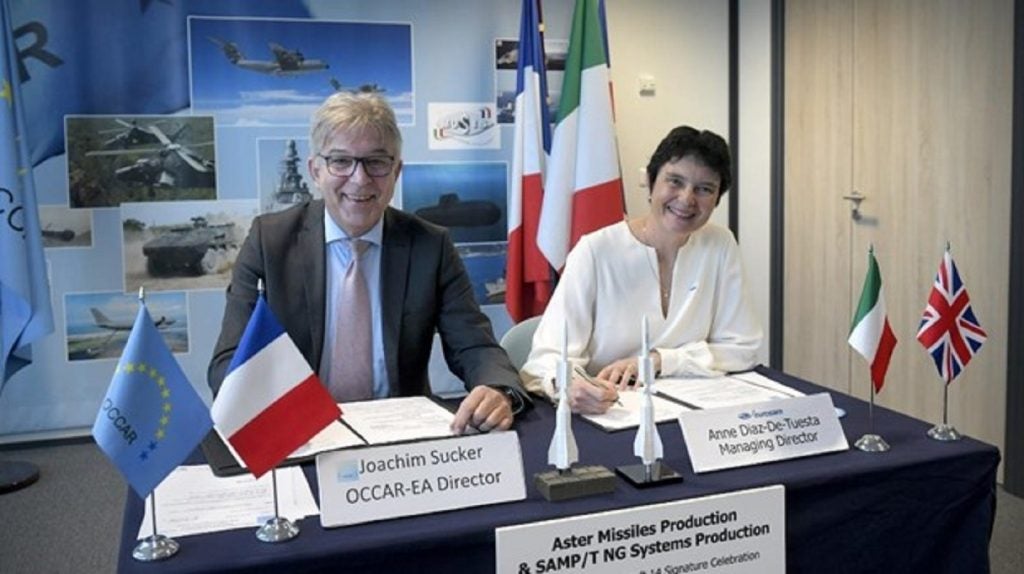
Like a large aircraft carrier, the US Navy’s efforts to use UAVs are slowly picking up steam. This is a welcome development, but nagging questions remain. Why did it take the navy so long to get going? More pertinently, would the navy be more motivated if the US Air Force were to play less in the US Army’s back yard and more in the navy’s?
Earlier this year, the navy finally deployed one of its workhorse Burke Class destroyers with a fully integrated ScanEagle UAV system, four years after the small and light ScanEagle first went to sea on other destroyers and amphibious vessels. The ScanEagle “supports [the USS Mahan’s] counter-piracy mission by providing maritime surveillance and cueing on suspicious activity,” said intelligence specialist 1st class Danielle Fournet, one of Mahan’s UAV imagery analysts.
The small UAV is proving to be as valuable at sea as it has been on land, which under the circumstances is not surprising given that piracy is the nautical first cousin of insurgency on land. One wonders, however, whether the ScanEagle’s backfit into the core C4ISR suite of its host vessels really required four years of planning, or whether the roughly concurrent arrivals of the Obama administration and Somali piracy pushed UAV integration to the top of the navy’s to-do list.
On the landward side, the Navy is treating the larger BAMS UAV as a full-fledged peer of the manned P-8A replacement for the venerable P-3 Orion. According to Navy Captain Bob Dishman, programme manager for BAMS, “the P-3 community is going to carry the BAMS capability” within naval aviation, and will pursue “joint basing and training opportunities to leverage the investment made by the Air Force in infrastructure”.
How well do you really know your competitors?
Access the most comprehensive Company Profiles on the market, powered by GlobalData. Save hours of research. Gain competitive edge.

Thank you!
Your download email will arrive shortly
Not ready to buy yet? Download a free sample
We are confident about the unique quality of our Company Profiles. However, we want you to make the most beneficial decision for your business, so we offer a free sample that you can download by submitting the below form
By GlobalDataGiven that BAMS is Northrop Grumman’s maritime version of its Global Hawk, piggybacking on USAF efforts is a no-brainer. One wonders, however, if the Navy was concerned that long-range UAVs might eventually start impinging on the traditional purview of carrier-based naval aviation.
See Also:
Such ideas have floated around the military futurist community for years; a 1996 edition of Airpower Journal, for example, carried an article entitled ‘The Air and Space Alternative’ (to carriers, obviously).
First shall be last
That the US Navy is the last service to push out the current generation of UAVs is ironic because it led its peers in early UAV experimentation. In response to the Soviet submarine buildup of the 1950s and 1960s, the navy used the DASH helicopter to add ASW capability to older ships: the DASH stopgap was quicker and cheaper than building new frigates. After losing two aircraft in a 1983 raid on Syrian air defences, a navy post-mortem concluded that the battleship USS New Jersey could have shelled the targets with tactical recon and spotting from UAVs, which Israel was already employing in Lebanon. The navy later used the Pioneer UAV effectively in a variety of roles during the first Gulf War.
The irony is functional as well as historical. Because the navy, unlike the air force, has limited real estate on which to launch and recover aircraft, it ought to have appreciated the intrinsic size and weight advantages of UAVs from day one. Attached to the navy, moreover, are the US Marines, which are supposed to be light and mobile.
Notwithstanding the theoretical appeal of UAVs, the navy’s development programmes have stretched out for a ‘surprisingly long time’, in the words of one UAV development analysis. One contributor was convoluted programme management: understanding the evolution of programmes from SEAD+ to STUAS / Tier II almost demands flowcharts and visual aids. Given the navy’s longstanding procurement problems, this might not sound surprising, but unlike costly boondoggles such as the army’s Arapaho helicopter, Navy UAV programmes have suffered the opposite problem of underfunding and a lack of sustained, strategically focused attention.
Arguably, immature technology and development errors do not explain the history of the navy’s UAV development as well as organisational behaviour. All services have internal rivalries, but those between the navy’s aviation, surface and submarine advocates have historically been the sharpest. The carrier community is particularly proud: though obviously escapist. The “Top Gun” and “An Officer and a Gentleman” portrayals of navy pilots have a kernel of truth in them. The downside of this culture, however, is resistance to anything that might undermine their institutional position.
Equally pertinent, the navy is the most independent of the services precisely because it has its own army and air force. Consequently, UAV technology could not benefit from interservice rivalry, which tends to allow more functional overlap than intraservice rivalry.
In this respect, recent interservice squabbles over UAV responsibilities provide insight into the non-technological forces influencing technology development.
Army versus air force
In 2005, the USAF began to lobby for a pan-service role as ‘executive agent’ for the development UAVs flying at or over 3,500ft. Executive agents are generally appointed temporarily while the interested parties devise a permanent solution. Nevertheless, the executive agent has authority over budget and acquisitions during its tenure, which, according to cynics, it usually tries to prolong. In any event, two Pentagon entities responsible for interservice projects rejected this idea.
However, the USAF did not abandon its ambitions. In March 2007, chief of staff Michael Moseley resuscitated the plan via a memo distributed not only within the Pentagon and the services, but also to congress. At a time of economic distress, the memo set forth the seemingly sensible notion that the air force could do the most cost-effective job of procuring and operating military aviation assets.
Not surprisingly, critics of the proposal became more vocal once the debate went public – and with some reason. In the intervening two years, the Pentagon had created not one, but two coordinating entities: the Joint Unmanned Center of Excellence and the Joint Unmanned Material Review Board. With some bureaucratic tweaking, either could act as executive agent.
The most irritating part of the USAF’s proposal, however, was the 3,500ft altitude qualifier. Army aviation leaders were especially vexed. Brigadier General Stephen Mundt, head of army air operations, rhetorically asked for ‘somebody [to] tell me when a line in the sky became a service core competency’. Warming to the issue, Mundt raised the obvious empirical counterexample.
“My helicopters fly above 3,500ft,” he says. “That does not mean they belong to the air force. Air Force airplanes fly below 3,500ft and it doesn’t mean they belong to the ground force component commanders.”
The debate continued until September 2007, when Deputy Secretary of Defense Gordon England rejected the USAF’s revised proposal. Although observers viewed the decision as a rebuke to the USAF, England evidently concurred with the memo’s argument that the procurement (if not necessarily the use) of UAV technology could profit from a more centralised approach.
The denouement to this story came last year, when Defense Secretary Gates sacked Moseley and criticised the services generally and the USAF especially for not putting enough UAVs in the field.
In a final irony, the USAF’s unmanned aircraft systems flight plan, released in May, envisions a drone-heavy force with (among other things) mini-UAVs operating at skyscraper and treetop height – in short, exactly where army UAVs operate now.
Lessons from the trenches
If you have experience / competency tied to your existing assets, you probably have a vested interest in them. If you have a vested interest, you will shape innovation to your existing biases, regardless of what the technology actually implies. For this reason, you’ll want to control sources of competition: and if you can’t control them, replace them.
The counterintuitive inference here is that institutional competition, even though it is inefficient from a pure accounting perspective, provides benefits that may more than offset the inefficiency. Therefore, the best way to create rapid progress in navy UAV usage might just be to get the air force into naval aviation’s mission space.







